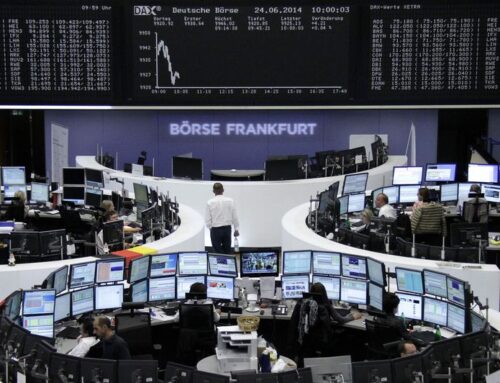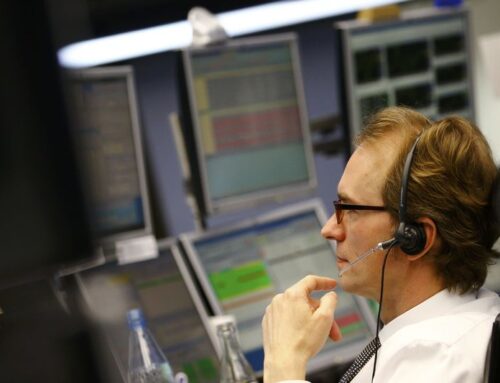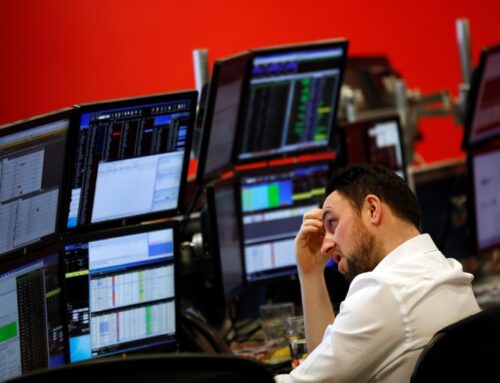S&P 500 Hits All-Time High
November 21, 2016
All major indexes trade at all-time highs as energy surges 2%
U.S. equities traded higher on Monday, led by energy stocks, as oil prices rose on renewed optimism that OPEC was closing in on a deal to cut production.
In midday trade, the S&P 500 topped its all-time intraday high of 2,193.81 hit on Aug. 15. The energy sector traded 2 percent higher to lead all sectors higher.
The Dow Jones industrial average rose 75 points to hit a record high, with Apple and IBM contributing the most gains. The Nasdaq composite advanced 0.8 percent, hitting a new record high.
The Russell 2000 and the S&P Mid Cap 400 indexes, which track small and mid cap stocks, respectively, also hit record highs.
“I think oil, and commodities in general, are leading the way for stocks,” said Peter Cardillo, chief market economist at First Standard Financial. He also said that crude prices received a boost from a weaker dollar.
U.S. crude for December delivery traded 4.16 percent higher at $47.59 per barrel as of 12:45 p.m. ET. The U.S. dollar index , which surged 2.24 percent last week to its highest level since 2003, traded 0.18 percent lower, around 101.
That said, Randy Frederick, vice president of trading and derivatives at Charles Schwab, said he expects oil prices to hold in a range roughly between $40 and $50 per barrel. “We’ve got high supply and slow-growing demand,” he said. “Any deal between OPEC would be shaky, as we’ve seen.”
There were no major economic reports due Monday. However, Federal Reserve Vice Chairman Stanley Fischer delivered remarks about how fiscal policy can help boost productivity and, in turn, lower the burden of supporting the economy on the central bank.
“Certain fiscal policies, particularly those that increase productivity, can increase the potential of the economy and help confront some of our longer-term economic challenges,” Fischer said.
The prospects of fiscal stimulus have risen sharply since Nov. 8, when Republican Donald Trump stunned the world by winning the U.S. presidential election. Investors and traders were quick to adjust positions, shifting large amounts of assets into sectors that would benefit from fiscal spending. They also piled into financials on hopes for deregulation within the sector.
Since Nov. 8, U.S. equities have seen a surge into record or near-record levels. But Stephen Wood, chief market strategist at Russell Investments, said a number of factors prior to the election primed the market to reach these levels. “We saw improvement in the inflation data, jobs and wages data and those factors sort of coalesced” with improving earnings, he said.
U.S. Treasurys, however, have taken a hit since the election, with the benchmark 10-year note yield breaking above 2 percent since then. On Monday, however, the 10-year note yield slipped to around 2.32 percent.
“When you get a knee-jerk reaction, it’s not surprising to see a pullback,” said Greg Woodard, managing director of fixed income at Manning & Napier. “Having said that, there is a trend for higher fiscal stimulus around the world, and that is supportive of higher yields.”
Later this week, which will be shortened by the Thanksgiving holiday on Thursday, the Fed is scheduled to release the minutes of its November meeting. That said, Schwab’s Frederick said the minutes are likely to have little impact on the market since the odds of a rate hike next month are so high.
According to the CME Group’s FedWatch tool, market expectations for a December rate increase were more than 95 percent.
Frederick also said he expects stocks to trade in a sideways pattern this week, given the holiday. “Traditionally, any holiday week is usually a low-volume week,” he said.
In corporate news, Tyson Foods shares plunged around 15 percent, after the firm reported weaker-than-expected quarterly results.
Overseas, European stocks mostly rose, with the pan-European Stoxx 600 index gaining 0.29 percent. In Asia, stocks closed mixed, with the Korean Kospi falling 0.43 percent and the Shanghai composite gaining 0.79 percent.
The Dow Jones industrial average traded 47 points higher, or 0.25 percent, at 18,914, with Apple leading advancers and 3M the biggest decliner.
The S&P 500 gained 11 points, or 0.51 percent, to 2,193, with energy leading all sectors higher.
Search
RECENT PRESS RELEASES
Related Post





